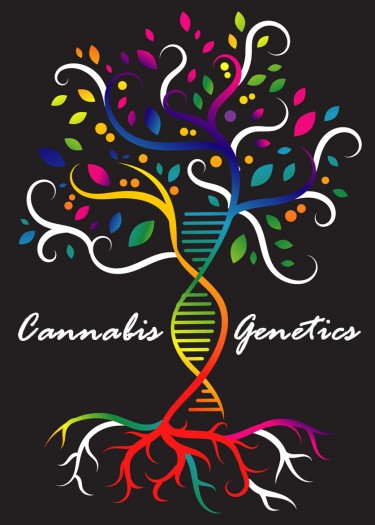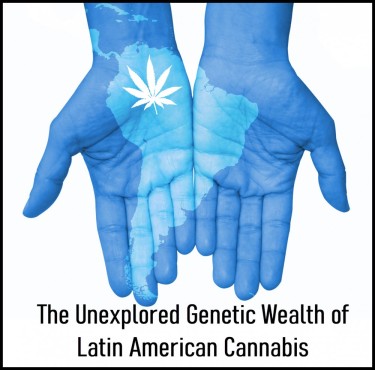The Guide to Cannabis Genetics Terminology

Cannabis genetics is a wide and very interesting topic, but few people tend to get the full messages from articles about this topic. This is because they have little insight into the meaning of several cannabis genetics terminologies. If you are at this table, then, there's nothing to be ashamed of.
Cannabis genetics is a niche that gives users comprehensive information about the marijuana family tree. For you to truly grasp the information provided in these sections, you need to have an understanding of the different terminologies used in cannabis genetics. All these meanings will be provided here.
Cannabis Genetics
For many years, scientists have been tasked with tracing the origin or genetic lineage of thousands of cannabis plants available in different parts of the world. Most of these researchers have pointed out that all varieties of cannabis most likely emanated from an original species which they called Cannabis Sativa L.
Cannabis Genetics Terminologies and their meanings
This list has been carefully curated to help you understand the basic terms used by cannabis breeders.
Category of cannabis plants
Cannabis is classified under the Cannaceae family. It grows in most regions around the world. The plant was first domesticated in Central Asia and since then, it has been grouped based on its subspecies and reproductive organs.
Based on reproductive organs.
Cannabis plants are predominantly dioecious (dioecious means that a cannabis plant can either have a male reproductive system or a female's reproductive system), on rare occasions a plant can be monoecious, meaning that the plant develops both reproductive organs.
Hermaphroditism
This occurs when a plant is monoecious. At the vegetative phase, these plants fertilize themselves and cause their flowers to produce seeds. This phenomenon can be very difficult to maneuver in cannabis production because the seeds affect the quality of the plant.
Sensimilla (feminized) plants have the best qualities and they are seedless.
Based on Distinct Subspecies
There are three subspecies of cannabis and each has individual traits that make it different from the other two.
Cannabis Sativa (C. Sativa subsp. Sativa)
Plants that fall into this division originate from tropical climates. These warm environments cause the plant to have a longer flowering phase. Cannabis Sativa is a tall grower and they can adapt to hot and humid conditions due to the presence of large, airy buds on their stems.
Cannabis Indica (C. Sativa subsp indica)
Indicas are majorly found in cold regions like Central Asia and Indian Subcontinent. They produce a high amount of dense buds and tend to grow wider, rather than taller. The short summers in cold regions have caused these plants to adapt to a shorter flowering phase.
Cannabis ruderalis (C. Sativa subsp ruderalis)
Unlike the other two, cannabis ruderalis was recently discovered in the 1920s. The plants have a tiny appearance; the maximum height a ruderalis plant can attain is 60cm. The plants have thin and scanty fabric stems that begin to flower once they are a month old.
Hemp
On many occasions, people have considered hemp as a separate entity from cannabis. Hemp plants are a version of cannabis plants that are being mass-produced for the textile industry. These plants can be used to make fibers and even degradable plastics. Their THC content is very low which makes it non-addictive. It also grows tall while possessing massive stems and few branches.
Cannabis Genotype and Phenotype
Genotype
This is the plant's genetic details. It describes how parent plants pass down and combine their genes to produce offspring. It refers to the DNA code of the plants which determines its height, color, leaf shape, and intermodal spacing. The genotype shows the traits a plant could develop as it grows from phase to phase.
Phenotype
This is the physical appearance of a plant. It is a factor that is affected by both the environment the plant is grown in and its genes. The phenotype of a cannabis plant is the combination of all the traits (environmental and genetic) a plant expresses through its developmental stages.
Other Cannabis Genetics Terminologies
The above terms are the basic cannabis genetic principles that you tend to understand. The next terminologies are used to characterize various cannabis plants.
Purebreds Vs Landrace
Referring to cannabis plants as landraces or pure needs is logically wrong.
When a plant is identified as purebred, it means that it has never been crossbred by other varieties. This is wrong. As you know, cannabis has undergone various crosses for breeders to be able to produce high-quality plants. Even nature itself has caused cannabis plants to be crossbred over the last thousands of years. A male plant located hundreds of kilometers away can pollinate a female plant through wind pollination. The concept of landrace cannabis plants is also wrong. While they may have existed centuries ago, their present existence is quite impossible. Cannabis varieties have been vigorously hybridized for many years now.
Chemotype vs Chemovar
These terms are wrongly used interchangeably. Although they have common features, both are methods of classifying cannabis strains based on their major cannabinoid compounds. In recent years, they have been used to distinguish cannabis based on their secondary cannabinoids, flavonoids, as well as terpene content.
All cannabis plants have distinct variations in their cannabinoid, flavonoid, and terpene content, which is why these terms are important. Chemo types indicate that a plant can either be CBD-dominant, THC-dominant or have a balanced CBD: THC content.
Strain vs Cultivar
Strain is used to identify the genetic difference in cannabis plants. Strain and cultivars can be used interchangeably, however, the correct terminology in cannabis or plant genetics is a cultivar. Strains are predominantly used in virology and microbiology to differentiate microbes based on their genetic variance. Cultivar refers to plants that have been modified for human consumption.
Cannabis Stabilization
This is the process of using breeding methods to produce plants that have lesser alleles. Satankizaton helps to create cultivars that have uniform and reliable traits.
There you have it, Cannabis Genetics 101
A summary of common cannabis genetics terms that can help you understand how cannabis exists as a unique species. With this, you can go on to discover the relationships between the various cannabis cultivars across the globe.
MORE ON MARIJUANA GENETICS, READ THESE...
A QUICK PRIMER ON THE GENETICS OF THE MARIJUANA PLANT!
OR..
WHAT IS THE GENETIC WEALTH FOUND IN LATIN AMERICAN CANNABIS STRAINS?







